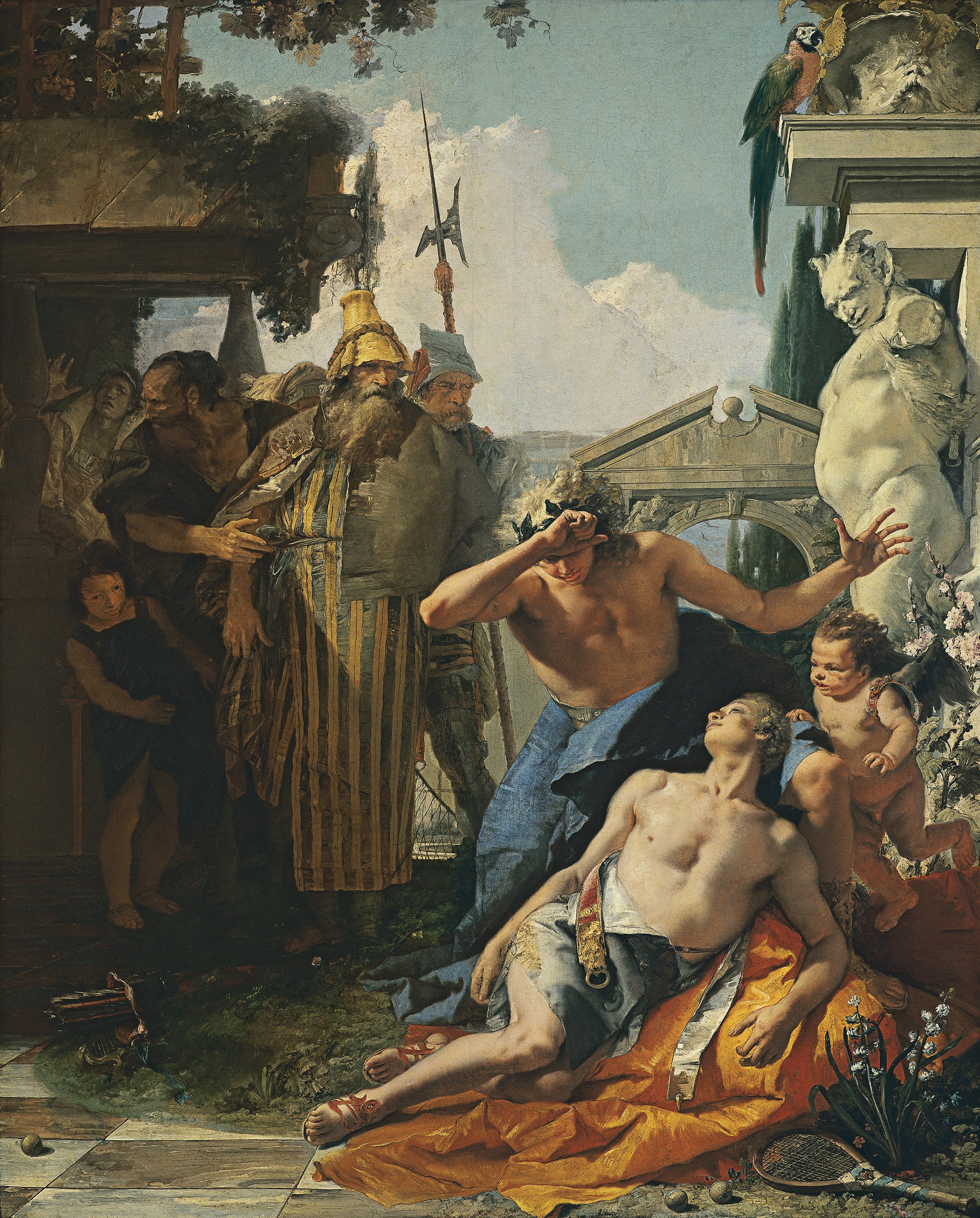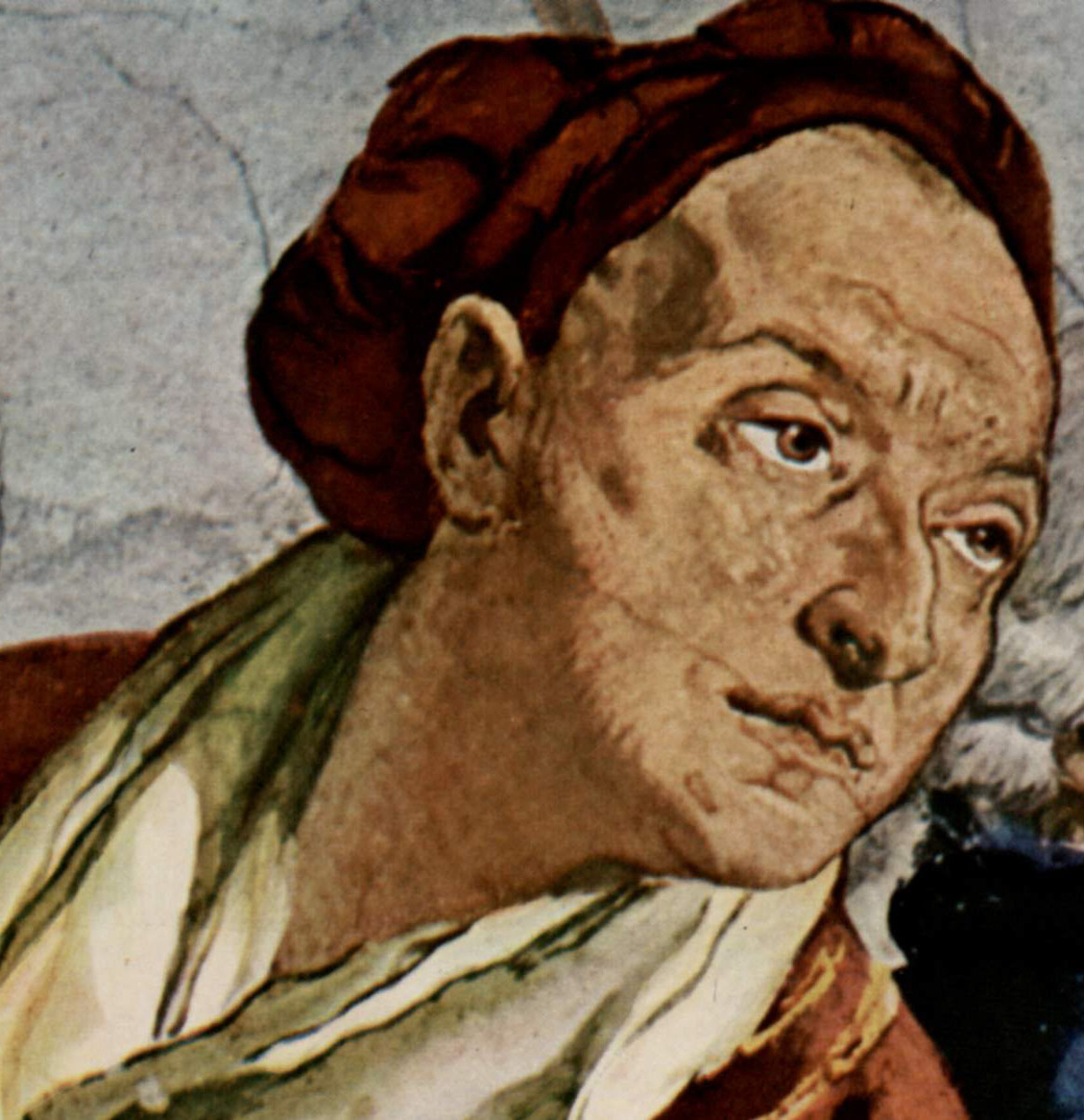The subject of this large canvas is taken from Ovid’s Metamorphoses (Book X) and relates the fatal outcome of the love of the god Apollo for the mortal Hyacinthus. According to this classical tale, Hyacinthus died as a result of his own clumsiness when he threw a discus during a competition, wounding himself mortally in the head. Another version of the tale has it that it was Apollo who threw the discus, accidentally killing the youth as it rebounded off the ground or a rock. In other versions it was the wind Zephyrus who deflected the discus towards Hyacinthus out of jealously and unrequited love. Unable to bring the youth back to life, Apollo transformed him into a flower that Tiepolo depicts in a beautiful clump in the right-hand corner.
Tiepolo offered a rather free interpretation about the object that killed Hyacinthus, which here seems to be one of the tennis balls located next to a racquet beside him. A third ball, which, to judge from the position of his fingers, Hyacinthus seems to have been holding just before the accident, has rolled across the tiled floor to end up on the left of the composition. In addition, we see part of a net behind the closely packed group of onlookers on the left. This license regarding the story derives from the translation of Ovid of 1561 by Giovanni Andrea dell’Anguillara. In that text the discus is replaced by a tennis ball. Known at the time as pallacorda, the game was popular among the nobility in the 16th century and at the time when Tiepolo painted this canvas. The Querini Stampalia Foundation in Venice has a canvas by Gabriel Bella in which pairs of players are engaged in the sport in an enclosed court.
Tiepolo offered a rather free interpretation about the object that killed Hyacinthus, which here seems to be one of the tennis balls located next to a racquet beside him. A third ball, which, to judge from the position of his fingers, Hyacinthus seems to have been holding just before the accident, has rolled across the tiled floor to end up on the left of the composition. In addition, we see part of a net behind the closely packed group of onlookers on the left. This license regarding the story derives from the translation of Ovid of 1561 by Giovanni Andrea dell’Anguillara. In that text the discus is replaced by a tennis ball. Known at the time as pallacorda, the game was popular among the nobility in the 16th century and at the time when Tiepolo painted this canvas. The Querini Stampalia Foundation in Venice has a canvas by Gabriel Bella in which pairs of players are engaged in the sport in an enclosed court.
We present today's work thanks to the Thyssen-Bornemisza Museum in Madrid. This painting is a part of one of the museum's thematic tours entitled Inclusive love, which consists of themes, iconography, and figures relating to LGBT culture, from Bronzino to Hockney. Check it out here.
P.S. Guess who painted the largest ceiling fresco in the world? Yes, it was Tiepolo! Here you can see it. :D
P.P.S. Also, don't forget to check our paper calendars for 2022, as they are about to sell out soon! :)


 Giovanni Battista Tiepolo
Giovanni Battista Tiepolo